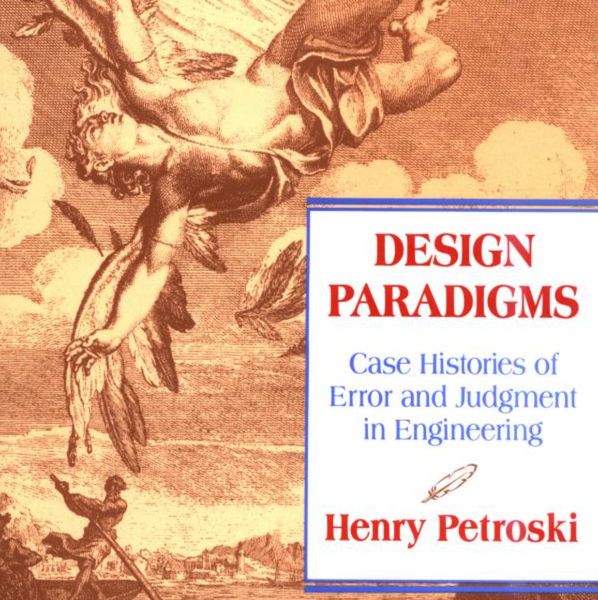
This week’s selection is “Design Paradigms: Case Histories of Error and Judgment in Engineering” by Henry Petroski.
This book is about “error”, something that can happen during the design process in engineering a product or structure. While you may initially think that the design process is principally about the 3D geometry of an object, it’s actually more about how the item could fail and how to mitigate those eventualities.
Author Petroski said:
“The fundamental nature of engineering design transcends the state of the art. Thus it follows that historical cases studies that illuminate those aspect of conceptualization, judgment and error that are timeless constants of the design process can be as important and valuable for understanding technology and its objects as are the calculus or the latest computer software. The lessons of the past are not only brimming with caveats about what mistakes should note be repeated but also are full of models of good engineering judgment.”
In other words written long ago by others, “If you don’t know history you will live to repeat it.”
That’s the paradigm taken by Petroski in the book, as he meticulously examines a number of historical engineering projects to understand the concept of failure and error in each.
The case studies examine are indeed historical: they include items from Ancient Greece, Galileo, Victorian designs and even the famous Tacoma Narrows Bridge.
Petroski is concerned that engineering curriculums focus too strongly on current state of the art techniques and tools, while forgetting the lessons of the past, hence his use of many historical examples.
While these examples are largely of structural buildings, monuments and roadways, there are still many lessons for those designing products using 3D printing. The principles of examination for potential error are quite universal and thus applicable to 3D printed design.
Petroski adds:
“The concept of failure is central to the design process, and it is by thinking in terms of obviating failure that successful designs are achieved.”
So true.
We’re an Amazon Associate and earn a small fee from qualifying purchases. Help support our 3D print news service by checking out this book!
Via Amazon
